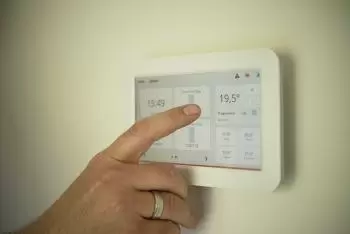
Active solar heating is a system that harnesses solar energy using technical devices, such as solar collectors, to convert it into usable heat in a building. Unlike passive solar heating, which relies on architectural design and materials that naturally harness sunlight (e.g., south-facing windows and thermal insulation), active solar heating uses technology to capture and transfer energy. solar to the living space.
A typical example of active solar heating is a solar collector , which absorbs solar radiation and transfers it to a thermal fluid (such as water or air) which is then distributed to heat a building or provide hot water. Active systems may include pumps, fans, and controls to regulate heat transfer.
The key differences between active and passive solar heating are the need for technical components in active systems and their higher efficiency, as they allow more precise control of the captured solar energy. In contrast, passive solar heating relies primarily on building geometry and materials to harness solar energy naturally.
Definition of solar heating
Solar heating is a technology that uses solar energy to heat homes. The conversion of sunlight into heat is carried out thanks to solar panels.
Solar thermal energy takes advantage of the direct conversion of solar energy into thermal energy . On the other hand, there is photovoltaic solar energy that converts sunlight into electricity. The system can then convert the electricity generated in the photovoltaic panels into thermal energy using heat pumps.
Thermal solar panels are also used for the production of domestic hot water (DHW).
Active solar heating operation
The operation of active solar heating involves the use of specific systems and components to capture and convert solar energy into heat, which is then distributed to heat spaces or water.
The basic operating process is described below:
- Solar energy harvesting : The active solar heating system consists of solar collectors that are installed in areas exposed to direct sunlight, such as roofs or freestanding structures. These collectors are designed to absorb solar radiation and convert it into heat.
- Heat transfer : Inside the solar collectors, there are tubes or ducts through which a heat transfer fluid circulates, which is generally a mixture of water and glycol (to avoid freezing in cold climates). As solar radiation hits the collectors, the heat transfer fluid heats up.
- Heat storage : The hot heat transfer fluid is directed to a thermal storage system, such as a heat tank or accumulator. In this tank, heat is stored for later use, allowing heat to be available even at night or on cloudy days.
- Heat Distribution : Stored heat is used to heat water or air, depending on the specific application. In the case of water heating systems, the hot heat transfer fluid is passed through a heat exchanger that transfers the heat to the drinking water or the home heating system. For air heating systems, heat is used to warm air which is then distributed through ducts or radiators.
- Automated control : Most active solar heating systems have an automatic control system that regulates the operation of the solar collectors and the heat transfer to the storage and distribution system. This control can adjust operation based on heat demand and weather conditions.
- Conventional energy supplement : Active solar heating systems can sometimes have a backup source, such as electric or gas heaters, to ensure heat availability in situations where solar radiation is not sufficient, such as on cloudy or cloudy days. overnight.
Difference between active and passive solar heating
The main difference is that active heating uses solar radiation to provide heating to the home through some additional mechanism. On the contrary, passive heating uses solar radiation directly.
- Active systems use additional mechanical and electrical elements. On the other hand, passive systems use solar radiation directly.
- Active systems do not need a special construction design.
- In passive systems, solar radiation is captured by an element of the structure itself, while active systems need separate collectors.
- We can use active systems in almost any location and type of building.
- Active solar heating is more expensive than passive system to build and operate.
- In active systems, heat can be obtained from the electricity generated in photovoltaic panels.
The concept of bioclimatic architecture takes advantage of the concept of passive solar energy to create a comfortable environment in the home.
Advantages
- Renewable energy source: Solar energy is a renewable and practically inexhaustible source of energy, which reduces dependence on fossil fuels and contributes to sustainability.
- Reduced energy costs: This system can significantly reduce home heating costs as it uses free solar energy instead of conventional energy sources.
- Low environmental impact: By relying on a clean energy source and not generating greenhouse gas emissions, active solar heating contributes to reducing the carbon footprint and mitigating climate change.
- Energy independence: allows home or building owners to generate their own thermal energy, making them less dependent on conventional energy suppliers.
- Durable systems: They typically have a long lifespan and require relatively low maintenance, ensuring a long-term investment.
Disadvantages
- Initial investment: Installation can have a significant initial cost, which includes the acquisition of solar panels, solar collectors and heat storage systems.
- Dependence on solar conditions: Efficiency largely depends on the amount of sunlight available. On cloudy days or at night, backup systems are necessary.
- Space Required: Installation of solar panels and collectors may require roof or ground space, which can be an issue on space-constrained properties.
- Seasonality: Active solar heating may be less effective in winter, when the days are shorter and the sun's intensity is lower.
- Maintenance costs: Although maintenance costs are generally low, active solar heating systems may require occasional maintenance to ensure optimal operation.